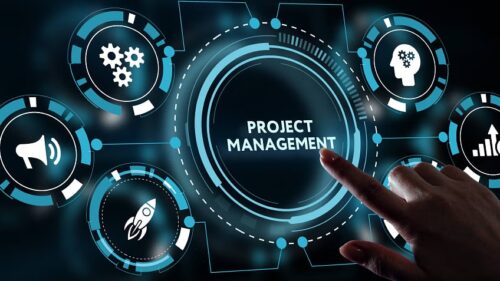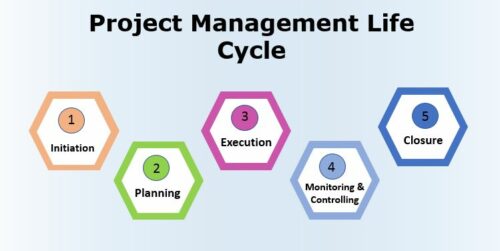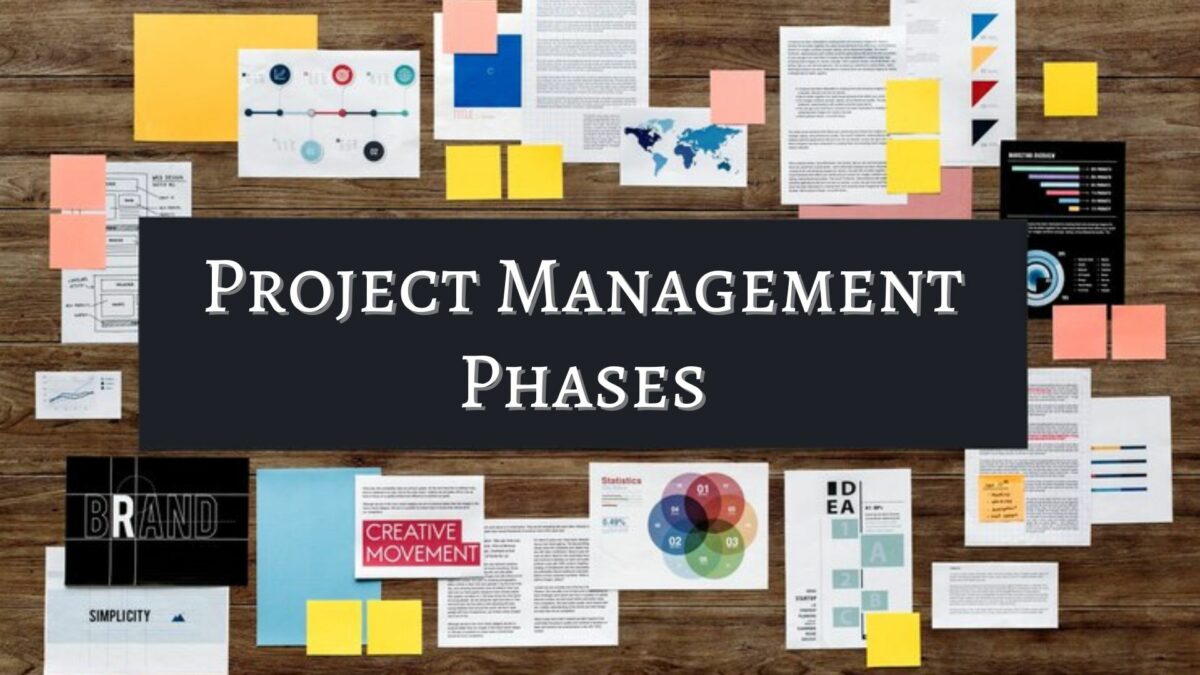Optimizing the Project Management Phases: Tools, Goals, and Strategies Explored
Do you find it challenging to manage a project? Well, you are not alone. Every other project manager is struggling with the same difficulty but at different levels. If you are also finding ways to simplify the overall management of your project, then learning the intricacies of project management can help you. Talking about project management phases it can allow you to streamline your workflow and align your team members.
A project has five phases irrespective of the industry; however, if you divide a work, then it becomes easier to get it done. But it’s not all smooth sailing. Challenges like poor communication, scope creep, resource constraints, schedule delays, and stakeholder conflicts can throw a wrench in the works. That’s why understanding and effectively implementing these five phases is crucial. This guide can help you attain the best in project management. Let’s explore these five phases and their significance.
What is Project Management?

Project management is a complex skill, a balance of science and art, that involves planning, initiating, executing, monitoring, and controlling all aspects of a project. A successful project manager tackles common challenges such as poor communication, scope creep, and stakeholder conflicts. These phases break down the vast sea of tasks into manageable portions, introducing structure and simplifying steps.
Imagine this process as a cross-country journey. The journey begins with the initiation phase, where you plan your route. Next, you gear up in the planning phase, strategizing about food, shelter, and possible obstacles. Then comes the execution phase – you’re finally on the road! But you can’t just drive without paying attention. The monitoring and control phase tracks your progress with regular milestones and tweaks your plan as needed. Finally, the closure phase marks the end of your journey.
What Project Management Phases Can Provide?
Understanding these phases improves your chance of project success. Let’s delve into these phases of project management and learn how to use them effectively.
- These standards provide structure and guidance, allowing you to tackle the complexities of any project.
- They also assist in identifying and addressing potential challenges at each phase, improving project outcomes.
- Common challenges in project management may seem daunting. But remember, they are just a part of the journey.
- Armed with the knowledge of the project life cycle and its phases, you can mitigate all challenges.
Stay tuned for a deeper exploration of each phase. Together, we’ll learn to navigate the generous tide of project management as efficiently as possible.
What Are The Five Phases of Project Management?

Understanding the Project Management Life Cycle Phases is not just about knowing what each phase entails. It’s also about potential hurdles and learning how to tackle them well. Let’s help you master these project management phases and run smoother, efficient projects.
Phase 1: Project Initiation
In the project initiation phase, you’re laying the groundwork for your project. You’d define the project, put together a project team, and establish its leadership. To illustrate, take the example of a US construction company that bagged a contract to develop the first copper mine in northern Argentina. With no existing infrastructure, much of the initiation phase was spent defining and assembling a project leadership team with the knowledge, skills, and experience to handle large, complex projects in such a remote area.
Common Problem with Project Initiation
One major hurdle that projects often face during initiation is authorization delay or even discontinuation of a new project. Properly defining the project and its scope can be a stumbling block in the initiation phase.
How to Solve the Problem?
Ensuring you have a strong leadership team in place and an effective project definition can help mitigate this issue. This preparation includes acquiring necessary permits and building relationships with partners, thus putting your project on the right track.
Phase 2: Project Planning
After initiation comes the project planning phase, this is when you decide how you and your team will achieve your project goals. It’s crucial to evaluate these goals using the three ‘P’s – possible, passionate, and pervasive.
Common Problem with Project Planning
A common problem at this phase can be setting unrealistic goals. If your project’s goals do not align with the budget, timeframe, or skills of your team, you’re setting yourself up for failure.
How to Solve the Problem?
Strive for what’s achievable. Ask yourself whether the project fits within your budget, whether your team has the capability, and if there’s enough time. Even though it’s their job, your team is more likely to invest in a project they believe is worthwhile and feasible.
Phase 3: Project Execution
The execution phase is when all your planning pays off. Here, work gets done! However, even this phase has its potential pitfalls.
Common Problem with Project Execution
One of the common problems during project execution is poor communication. This might lead to tasks being misunderstood or missed, ultimately impacting the success of the project.
How to Solve the Problem?
Poor communication can be addressed by setting up robust communication channels and maintaining transparency in tasks and processes.
Phase 4: Project Monitoring and Controlling
In this phase, your role shifts from doing to monitoring and controlling. It involves ensuring everything is on track and adjusting as necessary.
Common Problems with Project Monitoring and Controlling
The common issue during this phase is scope creep. Changes or expansion of the project’s scope can shift timelines and affect the project’s success.
How to Solve the Problem?
To tackle this, it’s crucial to have a change control process in place. This procedure manages scope creep and ensures changes align with project goals.
Phase 5: Project Closure
The closure phase involves wrapping up all aspects of the project- analyzing its success, assessing team performance, and consolidating project reports.
Common Problem with Project Closure
The issue arises during this phase is stakeholder conflicts. Not everyone might agree on project success or whether all key deliverables were met.
How to Solve the Problem?
Regular status updates, comprehensive end reports, and stakeholder meetings can ameliorate this issue. Clear communication and transparency in the closure phase ensure everyone’s on the same page.
How Can Project Management Software Help?
You have learned to streamline team collaboration, keep communication clear, and maintain sight of your objectives. But what if there’s a way to make things even smoother? It is possible with PMS, which is a valuable tool in managing these phases of project management. PMS equips you with the necessary tools to handle any challenges effectively every step of the way. Such software includes Jira Software and Jira Work Management (JWM), which are designed to simplify project tracking and encourage fluidity in project management for both software and business teams.
During the project execution phase
For instance, the PMS steps in to manage the day-to-day requirements of putting your project plan into action. From coordinating resources and keeping everyone informed about their tasks and timelines to replacing disjointed, cumbersome spreadsheets, PMS takes a significant load off the team’s plate.
During project planning
Let’s take Project Manager’s online Gantt chart as an example. It takes your task list and creates a timeline, with the duration for each task adjustable and aimable towards a team member. Moreover, the tool takes collaboration to the task level; team members can comment, add relevant documentation and photos, and even bring in others not earmarked for the task, who are instantly updated via email!
How To Choose the Right Project Management Software?

To further optimize these phases of project management, it’s necessary to source the right software. The software should provide comprehensive solutions rather than acting as a temporary band-aid for particular issues. Numerous tools offer task-level collaboration, multiple project views, Gantt charts, Kanban boards, and other advanced features. The question is, which among these suits your team’s unique needs best?
The answer depends on the stages of your project management life cycle and the working styles of your team members. For instance, tools like an online Gantt chart are beneficial for planning stages. Its timeline-based structure organizes tasks, durations, and assignees, fostering effective collaboration. A Gantt chart notifies even those not assigned to the task, thus promoting better team communication.
The PMS tool you choose should be one that aligns with the unique needs and working styles of your team. The right software should not only guide you through each of the project management life cycle phases but also keep you on track to meet your goals. There are numerous options available, and each offers unique features and tools that can significantly benefit different phases of project management. Let’s check what you need to keep in mind:
- What’s possible, passionate, and pervasive in your game plan?
- Are you setting goals that match your budget?
- How about your team’s capabilities and time constraints?
- Always ask yourself: is this a project that can fire up your team’s morale?
Conclusion
So, you’ve seen how vital it is to pick the right project management software that syncs with your team’s needs. In the above guide, we talked about the need to set attainable project goals that align with your budget and resources. We have covered the software you should choose to deliver comprehensive solutions. Now, it’s up to you to explore the software options out there and find the one that fits your team’s style and goals like a glove. That’s your key to project management success.
Frequently Asked Questions
Q1. What is the importance of choosing the right project management software?
The right project management software will align with the team’s unique needs and working styles. It offers comprehensive solutions to problems faced by the team and doesn’t only provide temporary fixes for specific issues.
Q2. How do I set achievable project goals?
Set goals that match the budget, timeframe, and your team’s capabilities. A goal should be realistic in the available conditions, always considering the available resources and any other potential constraints.
Q3. How can I inspire passion within my team for a project?
Creating a shared vision of project outcomes, acknowledging team contributions, and fostering a positive work environment can significantly inspire passion within your team.
Q4. Can you explain the use of Gantt charts and Kanban boards in project management?
Gantt charts and Kanban boards are tools to visualize and track project progress. Gantt charts show the timeline of project tasks, while Kanban boards portray tasks in different stages (to-do, in progress, done, etc.).
Q5. How should I explore available software options for project management?
Start by understanding your team’s needs, working styles, and project goals. Then, you can research and shortlist software that meets these criteria. Opt for trials or demos before making a final decision.

Leave a Reply